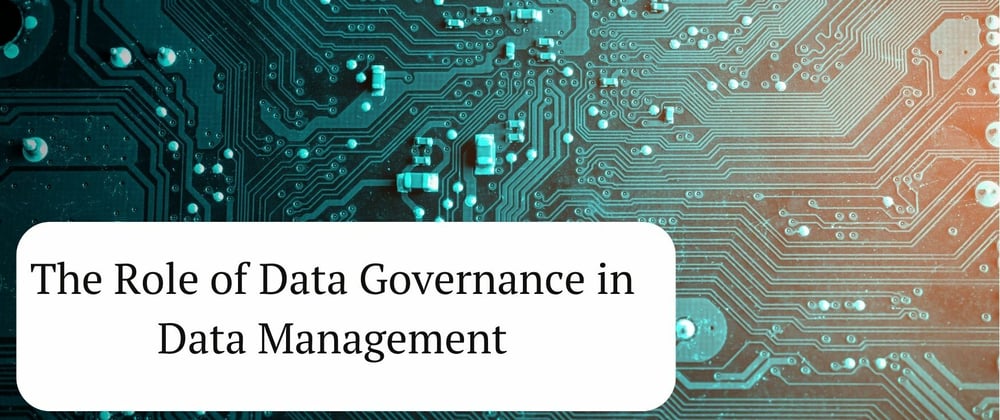Both data governance and data management workflows are critical to ensuring the security and control of an organization’s most valuable asset— data. An experienced IT specialist understands the differences between the two, but there can still be confusion at a more granular level.
Is the positioning of data governance vs. data management correct? In this article, we will answer that and other questions about enterprise data governance and data management processes.
What is Data Management?
Data management is the workflow managing the creation and realization of the elements required to handle an organization’s data, including data retrieval, generation, and disposal. With these elements implemented, an organization can analyze and utilize big volumes of data significantly more efficiently.
Nowadays, nearly all business processes are data-driven, so an organization should treat data as a critical asset and manage that asset appropriately. To do that, IT teams should understand the elements of data management clearly and establish the required workflows.
Data Management Elements
The list of data management subcategories includes the following:
Data preparation: This step enables the organization to read and analyze the data accurately. The stage gathers and packs the required raw data into a usable shape. Organizations and departments can sometimes skip this step to be able to finish reports or analytical tasks faster. However, working with raw and unprepared data can result in wrong data interpretation and inefficient decisions.
Data extract, transform, load (ETL): Simply put, this is the transformation of data before sending it to the long-term repository (aka warehouse). The process can and should be automated after an organization has the data prepared and pipelines set up.
Data catalogs: Creating data catalogs mainly means working with metadata. This enables an organization to have a bird’s-eye view of the available data and track and search data easier before use.
Data architecture: This data management element means formalizing data flow structures. When the available data is organized and managed according to a common template, the effectiveness of data usage can significantly improve.
Data security: A set of workflows and systems enabling data protection from unauthorized access, alteration, and loss.
Data pipelines: The organization builds “traffic lines” to enable automatic data transmission between systems.
Data warehouses: A long-term repository helps keep the data from multiple sources in one place. This enables an organization to increase the efficiency of data analysis.
Data governance: Includes defining policies and workflows to keep the data complete, available, secure and compliant with regulatory requirements.
Below we expand the definition and underpin the critical meaning of data governance for a contemporary organization.
What is Data Governance?
Data governance (DG) means ensuring and controlling an organization’s data availability, usability, completeness, and security. Governance processes rely on the organization’s internal standards and general data policies. With the increasing meaning of data and organizations’ dependence on analytics, along with evolving privacy requirements and regulations, the role of data governance has become more critical.
Efficient data governance is impossible without a qualified team of employees. The department can include:
Governance team (DG council): The body driving data awareness and transformation within the organization. When data conflicts arise, the council is the final decision authority to solve them.
Steering committee: Employees responsible for directly implementing DG principles and turning the council’s initiatives into practical measures.
Data stewards group: These define and perform everyday operations with data, including recording, transmission, storage, and timely disposal.
The team cooperates to organize and drive data governance policies and standards inside the organization. The DG efficiency can additionally increase when representatives from other departments of an organization are involved in the process.
Why Data Governance is Important
Data Governance is a critical part of data management overall. Properly organized and developed DG standards and policies should define the following:
Data owner
Data access
Data privacy and integrity protection measures
The amount of data compliant with new requirements
Data sources authorized and approved for use
When data governance is ineffective, overcoming inconsistencies between different data parts in various IT systems becomes a serious problem. Processing the data about partners or distributors is challenging when the customer service, sales, logistics, and other departments have different listing forms. Unintegrated data then breaks the reporting deadlines, analysis accuracy, and other workflows critical to the organization’s functioning and development.
Additionally, regulatory compliance issues may arise when data governance is not organized properly. That is an undesirable situation, given that data protection, privacy requirements, and laws are evolving. New initiatives, such as the California Consumer Privacy Act (CCPA) and the GDPR in the EU and UK, add mandatory requirements. Usually, a data governance team brings commonly accepted data standards, definitions, and formats suitable to simultaneously increase data consistency for production and compliance needs.
Although data governance is a critical element of a data management approach, no organization should implement DG workflows “just because”. The efficiency marker for DG policies, standards and processes is the impact they have on the organization’s performance. Well-organized and thoroughly implemented DG practices can help an organization develop new projects, provide better and more advanced services, increase productivity and boost further growth.
Conclusion
Data governance (DG) is a critical component of data management in an organization. The specific data governance role is to define workflows and policies ensuring data completeness, security, and compliance with regulatory requirements. DG standards of an organization and their practical realization should be the responsibilities of a qualified team of employees running the DG council, steering committee, and data stewards. Data governance standards define data owners, data access rules, integrity and privacy protection measures, the level of data compliance, and credible data sources. Ineffective DG results in the lack of data integrity between different systems of an organization. Failures in data processing, analysis, and reporting come after, causing wrong management decisions and spoiling the overall organization’s performance. Therefore, the main measure of effectiveness here is the impact that DG has on the organization’s effectiveness and development.

For further actions, you may consider blocking this person and/or reporting abuse






Top comments (0)